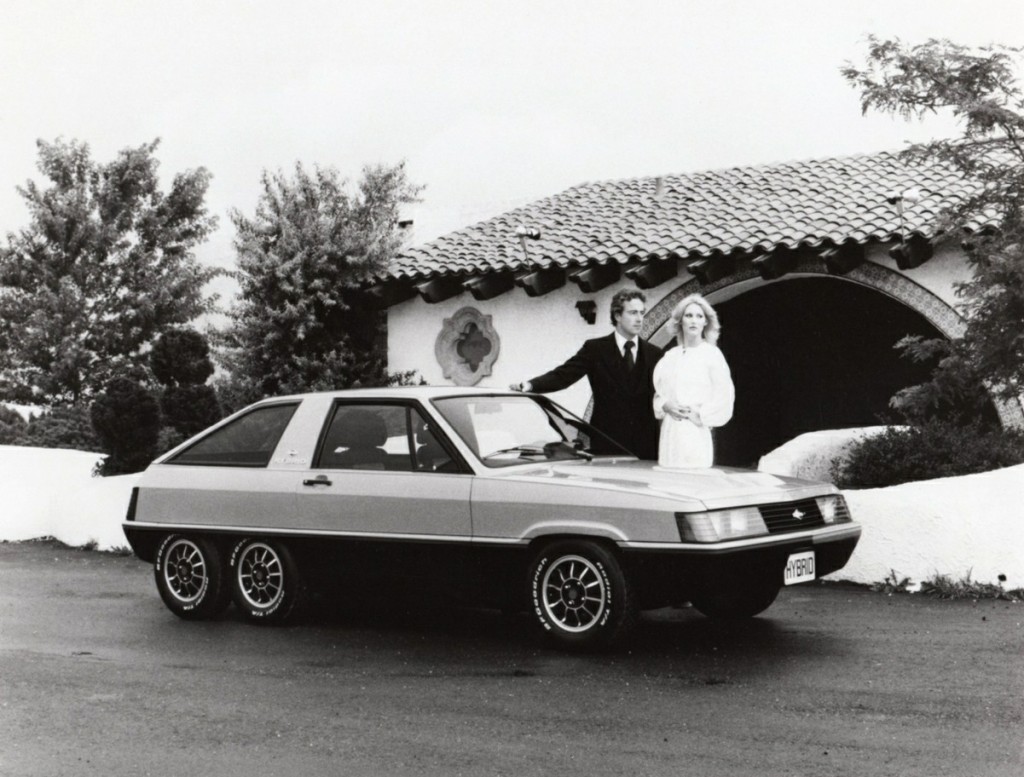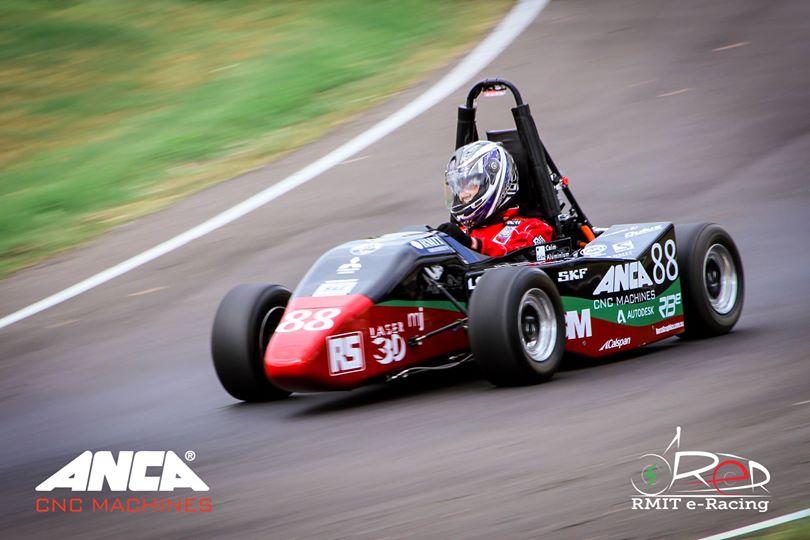David Ross takes a look at the RMIT Electric Racing team and what keeps the wheels turning.
To the uneducated eye, RMIT University’s Building 10 – one of the three monolithic sisters of the upper CBD – houses the expected 1980s-early 2000s classrooms. But in a little corner of a classroom-cum-garage in the subterranean depths of the building you’ll find RMIT Electric Racing.
The electric car has been around since before Henry Ford and his Model T. London, Paris and New York all had electric taxis in the early 20th century. RMIT’s entry to the field was considerably more recent.
Born in 2008, RMIT Electric Racing was the second son of RMIT’s SAMME (School of Aerospace, Mechanical and Manufacturing Engineering) program. The progenitor of the team was Professor Simon Watkins, who started the project in 2000.
The first champion of the university racing circuit was petrol-fuelled. But with the changing of times, RMIT Electric racing has moved up the rankings – although still not quite as zippy in a toe-to-toe, tyre-to-tyre race against petrol.
While this year’s car is still under construction, the 2013 model reached a top speed of 120 km/h – doing zero to 100 in 4.9 seconds – but not enough to top Monash’s team, the competition winner.
The electric team placed top overall in the electric category, 10th of 24 in competition. But the petrol team failed to complete the race.
Michael Butler, manager of the RMIT Electric racing team, blamed the petrol team’s poor showing last year – which saw them lose to their electric cousins – on bad luck and malfunctioning components.
Mr Butler said this year they hoped to beat them again, but this time on the merits of the car rather than technical mishap.
“We want to beat them on our own grounds, not because they failed to complete,”

1980 Briggs & Stratton Gasoline/Electric Hybrid Concept, an unsuccessful bid at 6 wheeled petrol-electric vehicles. Photo: Alden Jewell, Flickr Creative Commons
Even though Monash has been top dog of the Australian university racing circuit since 2009, the commitment of RMIT and its students to building and racing single-seat race cars hasn’t faded.
Universities around the country build and race cars – most of which are fuelled and function as petrol. There are, however, several universities that also build and race electric cars, which compete in separate events – but can also compete against the petrol contenders.
The university racing circuit runs in Australia and overseas. Monash, who won last year, went on to compete internationally before losing out against the superior funded and designed Dutch Delft team.
Many past winners of the Formula SAE competition have come from Germany.
Perhaps it’s no surprise the German car teams are better funded – to the tune of several hundred thousand dollars more than any Australian team – and operate in cooperation with Germany’s robust domestic car industry, something Australia is quickly losing.
The electric team has come a long way in a short time. There wasn’t a separate electric racing category on the circuit until 2010.
Started as an extension of the original RMIT Racing team, the RMIT Electric Racing dream almost died in 2011, with SAMME unable to house and support two teams with two cars.
The split of the petrol and racing teams, according to Butler, was good for both teams.
“Now that we’re separate it gives both of us more an ability to function, we can both make the most of the resources available to us,” he said.
While reportedly amicable, the split very nearly saw the electric dream die. There simply aren’t that many spare nooks or crannies to put a car and everything to make it in a university, even one as big as RMIT.
The electric dream was only saved by the timely intervention of Innovation Professor Graham Holmes, from RMIT’s school of Electrical and Computer Engineering. He stepped in and found a space in his school.
It’s not much of a nook or a cranny, but it’s enough, and there’s plenty of little spots around the city campus the electrical team can use such as the advanced machining equipment in building 56 on Queensberry Street.
However, the space is still cramped, up in the corner of a room never designed with race cars in mind. Hardly room to swing a rear spoiler.
Reportedly there are moves under way from RMIT to find a more permanent place. But for the moment, if you take a trip under Sister 10 of the triumvirate towers you’ll find something unexpected.
The Electric Racing team will compete against other Australian universities in the Formula SAE competition at the Calder Park Raceway, December 11-14.

